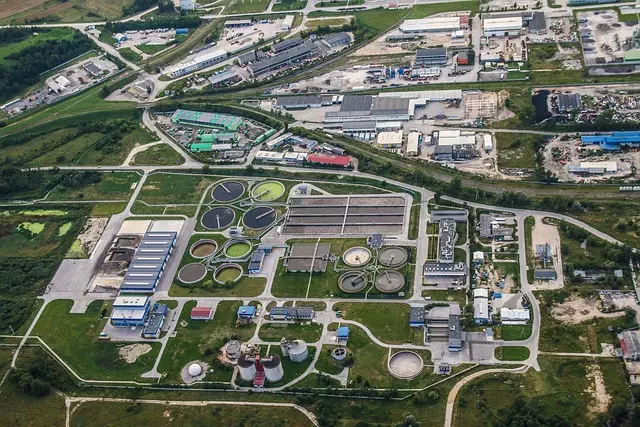Non-invasive wrinkle reduction treatments have surged in popularity as people seek alternatives to surgical facelifts. Using techniques like injections, creams, laser therapy, and radiofrequency devices, these procedures boost collagen production without incisions or lengthy recovery times. Each method offers both short-term and long-lasting solutions, with top choices including topical creams, injectables, microdermabrasion, IPL therapy, RF treatments, and Botox/filler injections. Consulting qualified professionals at reputable clinics is crucial for maximizing safety and efficacy while considering potential side effects, costs, and maintenance requirements. These non-invasive treatments provide effective, gentle ways to achieve a youthful complexion without surgery.
“Uncover the secrets to achieving a youthful glow without the need for surgery. This comprehensive guide delves into the world of non-surgical wrinkle reduction, exploring innovative techniques that are revolutionizing skincare. From understanding the basic science behind these treatments to uncovering popular methods and real-life success stories, we dissect the benefits and considerations of non-invasive approaches.
Discover how professional clinics offer safe, effective solutions, guiding you in making informed decisions for achieving a more youthful appearance.”
Understanding Non-Surgical Wrinkle Reduction: Unveiling the Basics

Non-surgical wrinkle reduction is a popular aesthetic procedure that offers a non-invasive approach to combating signs of aging. Unlike traditional surgical facelifts, these treatments are designed to stimulate the skin’s natural healing process and boost collagen production without incisions or extensive recovery periods. The basic concept behind non-invasive treatments is to target specific areas concerned with wrinkles, fine lines, and loss of skin elasticity.
There are various techniques available, each utilizing different technologies and substances to achieve optimal results. Common methods include injections (such as Botox or filler), topical creams, laser therapy, and radiofrequency devices. Each has its unique mechanism, whether it’s temporarily paralyzing facial muscles to reduce dynamic wrinkles or stimulating collagen synthesis for longer-lasting improvements. Understanding these fundamentals is the first step in choosing the right non-surgical wrinkle reduction method tailored to individual needs.
The Rise of Non-Invasive Treatments for a Youthful Appearance

The demand for achieving a youthful appearance without invasive procedures has skyrocketed in recent years, leading to a rise in non-invasive treatments that offer effective wrinkle reduction. Non-invasive treatments have gained popularity due to their minimal downtime, reduced risks, and ability to provide noticeable results. These advancements in skincare technology utilize various techniques such as topical creams, injectables, and energy-based devices to stimulate collagen production, improve skin texture, and smooth out fine lines and wrinkles.
The shift towards non-invasive treatments reflects a growing preference for preserving natural beauty while mitigating the concerns associated with surgical procedures. With constant innovation in dermatology, individuals now have more options than ever to maintain and enhance their skin’s health and appearance, all while enjoying a more comfortable and less traumatic experience.
Common Non-Surgical Methods to Combat Ageing Signs

When it comes to non-surgical wrinkle reduction, there are several methods that offer effective results without the need for invasive procedures. One popular approach is using topical creams and serums enriched with active ingredients like retinol, peptides, and vitamin C. These substances stimulate collagen production, improve skin elasticity, and help reduce the appearance of fine lines and wrinkles. Another non-invasive treatment involves microdermabrasion, a procedure that gently exfoliates the top layer of skin to reveal smoother, brighter skin underneath.
Additionally, intensive pulsed light (IPL) therapy is a non-surgical wrinkle reduction technique that targets age spots, fine lines, and uneven skin tone by emitting bursts of intense light energy. This treatment works by breaking up pigmented spots and stimulating collagen renewal. Moreover, radiofrequency (RF) treatments use heat energy to stimulate collagen production and tighten loose skin, providing a more youthful appearance without any incisions or recovery time. These non-invasive treatments offer convenient and effective ways to combat ageing signs, allowing individuals to achieve a refreshed and rejuvenated look.
How Do These Treatments Work? A Scientific Perspective

Non-surgical wrinkle reduction treatments have evolved significantly, offering effective solutions for those seeking to combat signs of aging without invasive procedures. At their core, these treatments leverage a combination of scientifically backed technologies and natural processes to stimulate collagen production and enhance skin elasticity. Radiofrequency (RF) energy, for instance, is utilized to heat the deeper layers of the skin, triggering the body’s natural healing response, which includes increasing collagen synthesis. This not only plumps the skin but also improves its texture and overall appearance.
Another prominent approach involves the use of injectables, such as Botox or filler agents. While these substances are foreign to the body, they serve as temporary yet effective solutions. Botox, for example, relaxes specific muscles responsible for facial wrinkles, while fillers add volume by smoothing out depressions caused by aging. From a scientific perspective, these non-invasive treatments capitalize on the skin’s remarkable capacity for regeneration and repair, providing visible results without breaking the skin or requiring extensive recovery times associated with surgical alternatives.
Benefits and Considerations: Weighing the Pros and Cons

Non-surgical wrinkle reduction offers a range of benefits for those seeking to enhance their appearance without undergoing an invasive procedure. These non-invasive treatments, often using advanced technologies like Botox or filler injections, can effectively smooth fine lines and wrinkles, providing immediate and long-lasting results. They are minimally painful, quick to perform, and have relatively short recovery times, making them attractive options for individuals who want a youthful complexion without the downtime associated with surgery.
However, as with any cosmetic procedure, there are considerations to keep in mind. Potential side effects, such as temporary redness or swelling, need to be weighed against the desired outcomes. The cost of non-invasive treatments can vary widely, and maintaining results may require regular sessions. It’s crucial to consult with a qualified professional who can assess your specific needs, discuss suitable options, and provide guidance on what to expect, ensuring you make an informed decision regarding non-surgical wrinkle reduction.
Safety and Effectiveness: Ensuring Quality Care

Non-surgical wrinkle reduction treatments have gained significant popularity due to their safety and effectiveness compared to traditional invasive procedures. These non-invasive treatments offer a more gentle approach to addressing skin concerns, minimizing risks associated with surgery. By targeting specific areas of concern, such as fine lines and wrinkles, qualified professionals can deliver visible results without the downtime or complications that often accompany surgical interventions.
The key to ensuring quality care lies in choosing reputable practitioners who specialize in non-invasive treatments. Utilizing advanced technologies and evidence-based practices, these experts can tailor treatments to individual needs, maximizing safety and efficacy. Regular consultations and follow-up sessions are essential to monitor progress, adjust treatment plans as needed, and ensure the best possible outcomes for patients considering non-surgical wrinkle reduction.
Choosing the Right Clinic: Tips for Informed Decision Making

When considering non-surgical wrinkle reduction treatments, choosing the right clinic is paramount to achieving optimal results and ensuring safety. It’s crucial to research and select a facility that specializes in non-invasive procedures, as this will guarantee the expertise needed for effective yet gentle interventions. Look for clinics with reputable credentials, licensed professionals, and positive client testimonials, indicating a history of successful treatments and satisfied customers.
Before making a decision, inquire about the specific non-invasive treatments offered, their effectiveness, and potential side effects. Reputable clinics should provide detailed information on products and methods used, allowing you to make an informed choice. Additionally, consider the clinic’s location, cleanliness, and overall ambiance, as these factors contribute to a comfortable and professional experience.
Real-Life Results: Success Stories and Customer Feedback

Many people are turning to non-surgical wrinkle reduction methods, seeking youthful-looking skin without the downtime and risks associated with surgery. The good news is that real-life results speak for themselves; numerous success stories and customer feedback highlight the effectiveness of these non-invasive treatments.
From fine lines and wrinkles around the eyes and forehead to more deep-set facial creases, individuals have experienced remarkable improvements in their skin’s appearance. These treatments offer a safe and gentle approach to rejuvenation, providing visible outcomes without the need for extensive recovery periods. Real-world experiences show that it is possible to achieve a smoother, more youthful complexion without resorting to aggressive procedures.
